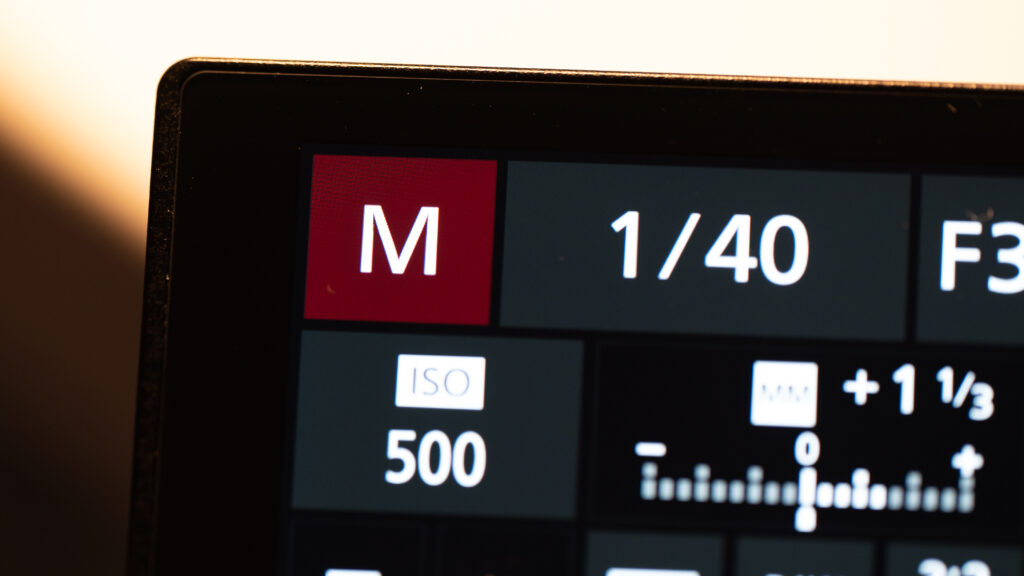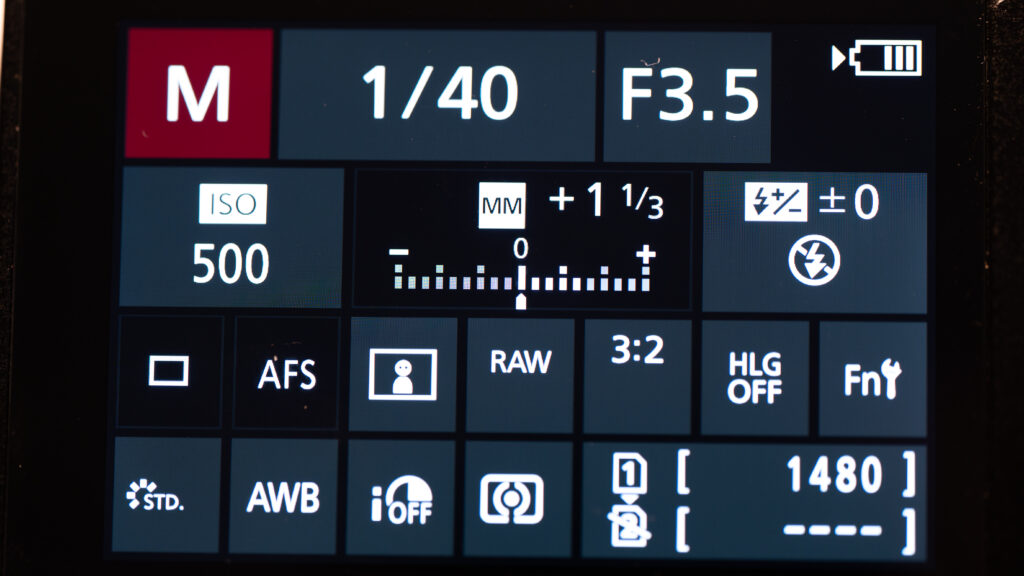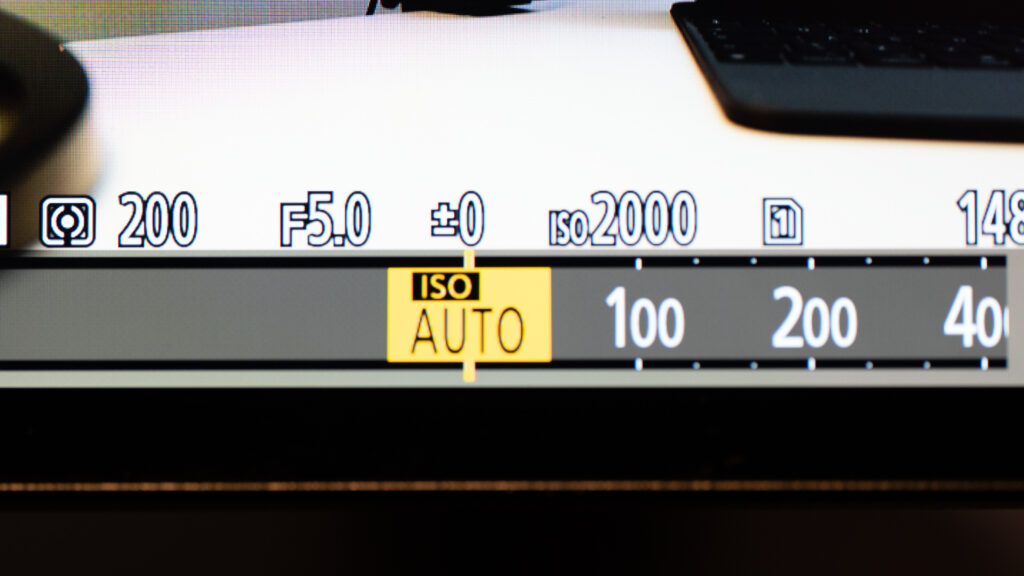Manual exposure
I recommend that you try out manual exposure. You will learn a lot about exposure doing so, and you will be a better photographer when using some of the semi automatic modes like Aperture priority, because you will understand much better what the camera does and what you control.
First things first: select manual mode using the mode dial on top of the camera. It sits to the right of the viewfinder. Manual mode disengages the automated metering, but the metering system is still at work, and the camera will tell you how you are doing in terms of exposing right, both via the preview in the viewfinder / rear LCD and via the exposure indicator. So you are not left entirely on your own, but you need to keep an eye out for the exposure when in manual mode. If you shoot RAW you can fix a lot of mis-exposure in post processing, but it is more fun and more rewarding to get it right in camera!


Aperture
There are 3 values to work with when in manual mode: Aperture, shutter speed and ISO. You have probably heard of the exposure triangle, and it is exactly that triangle you need to be on top of.

The front command dial that sits under or around the shutter release controls the aperture. Turning the command dial updates the aperture setting. You can see the aperture value both in the electronic viewfinder and the rear LCD as you turn the dial. When you are changing the aperture value, the setting turns yellow to help you see what you are changing.
Shutter speed
The shutter speed is selected turning the rear command dial that sits top right on the camera, closest to you. You can read the value of the shutter speed both in the rear LCD and the bottom of the viewfinder.


ISO
On a digital camera, ISO is actually not part of the exposure. The sensor has the sensitivity it had when it left the factory and it cannot be changed.
By setting the ISO to other values than the base ISO 100, you apply a gain to the values read by the sensor. It is camera internal post processing that happens from the sensor has read the light and until the image sits on the memory card. Just like in the old days when you turned up the radio, you both amplified the signal and the noise – the original signal remains the same. ISO works the same way, so the price for turning up the ISO is more noise and grain.
The S5 has an ISO button sitting right behind the shutter release. When pushed, you can change the ISO value turning either the front or the rear command dial.

Contrary to what I am used to from my Nikon cameras, the selection between Auto ISO and manual ISO does not happen as a consequence of turning the front command dial, rather it is as the near end of the ISO scale, i.e. when you try to select a value smaller than ISO 100, then it selects auto ISO.

When you have auto-ISO switched on, the camera will be in a – if not semi automatic – then quarter automatic mode. In other words, the camera will try to make the picture correctly exposed ALONE changing the ISO. So if you have a dark scene where the aperture is closed down and/or the shutter speed is fast, the camera will have to go to very high ISO values to compensate.
Exposure metering
When you switch to manual mode with manual ISO as well, then you disengage the metering system in the camera, i.e. you are in full control. However, the camera is looking over your shoulder and has an opinion about how you are doing. You can see this in the viewfinder and the rear LCD: if the image turns dark or very bright, it is a clear signal that your exposure is off to some degree.

You can keep an eye out for the metering scale both on the rear LCD and the viewfinder; this will give you an indication of how the camera thinks you are doing with regards to exposing (technically) correct. You can choose to ignore this of course – the artistic freedom – but in the beginning I would recommend that you see what the metering scale tells you.
Management information
The information that the Lumix S5 shows varies subject to the display settings.

If you hit the “DISP” button shown above, you will toggle between different options for what is shown in the viewfinder and the rear LCD. You can make further and more detailed configuration of what is shown via the menu system, but for starters try the “DISP” button options and see which one you like.
Next step
I hope the above was useful and that you may start to feel a bit comfortable with shooting in manual mode. The worst thing that can happen is that you come home with some images that are exposed poorly. If you shoot RAW, chances are you can fix this in post if need be. So the worst case scenario is perhaps not so bad if you think about it. Best of luck with manual exposure!
Related reading
What is aperture? And why important?

What’s frustrating about the S5 is not being able to lock exposure in manual mode (even if I have AE lock assigned to a button). On my S1 it works fine.